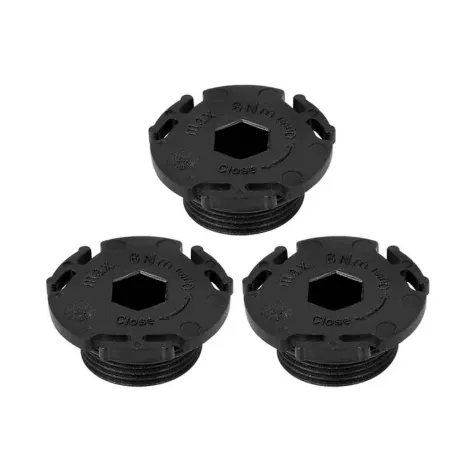Understanding the Rise of Plastic Oil Drain Plugs in Modern Vehicles
Traditionally, oil drain plugs were made of metal—commonly steel or aluminum—due to their durability and resistance to the high temperatures and pressure conditions in engine oil systems. However, in recent years, plastic oil drain plugs have become increasingly popular, especially in vehicles manufactured by European brands like BMW, Audi, and Volkswagen.

The shift toward drain plug plastic components is part of a broader trend in the automotive industry aimed at reducing vehicle weight, lowering production costs, and improving sustainability. Modern plastics, such as reinforced nylon and high-temperature thermoplastics, have made it possible for plastic drain plugs to meet performance standards comparable to their metal counterparts. These materials offer high resistance to chemicals, extreme temperatures, and mechanical stress, which are all crucial in oil systems.
Benefits of Using Plastic Oil Drain Plugs
The use of plastic oil plugs in vehicles isn’t just about cost-saving or design aesthetics. There are several technical and practical benefits to using plastic oil drain components:
Weight Reduction: Plastic is significantly lighter than metal, contributing to overall vehicle weight reduction. While a single plug may seem minor, cumulative plastic components can make a meaningful difference in fuel efficiency and emissions.
Cost Efficiency: Plastic plugs are cheaper to manufacture and easier to produce at scale. This is beneficial for automakers trying to keep production costs down without sacrificing performance.
Ease of Installation and Removal: Many plastic drain plugs are designed with integrated gaskets or O-rings, eliminating the need for separate sealing washers. They often use a twist-lock or quarter-turn mechanism, making them user-friendly and reducing the risk of overtightening or thread damage—a common problem with metal plugs.
Leak Prevention: Because many plastic oil plugs come with built-in sealing systems, they often provide superior leak prevention compared to metal plugs with separate crush washers.
Concerns and Maintenance Tips for Plastic Drain Plug Users
Despite their benefits, plastic oil drain plugs also raise concerns for certain vehicle owners and mechanics, especially those more accustomed to traditional designs. Here are some of the most common considerations:
Durability and Longevity: While modern plastic is highly durable, it can still degrade over time due to heat cycles and exposure to engine oil. This means plastic oil plug replacement may be needed more frequently than metal versions.
Heat Sensitivity: Although engineered plastics are heat-resistant, they are not entirely immune to high temperatures, particularly in turbocharged engines. This is why it's crucial to use manufacturer-recommended replacement parts to avoid compatibility issues.
Compatibility Issues: Swapping out a plastic plug for a metal one (or vice versa) without checking for compatibility can lead to poor sealing and even engine damage. Always ensure that the replacement part—whether drain plug plastic or metal—is designed for your specific engine model.
Maintenance Tips:
Inspect the plastic oil drain plug during every oil change for signs of wear, such as cracks, discoloration, or a loose fit.
Replace the O-ring or sealing gasket if it shows signs of wear, even if the plug itself looks fine.
Avoid overtightening. Most plastic plugs are designed to snap or click into place—tightening beyond this point can strip threads or crack the plug.
Use manufacturer-approved parts to ensure proper sealing and pressure retention.
The transition from metal to plastic oil drain plugs reflects broader shifts in automotive design philosophy—prioritizing efficiency, user convenience, and sustainability. While drain plug plastic components might not be suitable for every application, their growing popularity indicates that, when used correctly, they can perform just as reliably as traditional metal plugs. Understanding the design, benefits, and maintenance of plastic oil plugs ensures drivers can make informed decisions and keep their engines running smoothly.
-
High-Quality Seal 12x22x5 for Industrial & Automotive Use | YJM Seal
Berita Nov.25,2025
-
Seal 12x20x5: Precision Radial Shaft Seals for Industrial Reliability
Berita Nov.24,2025
-
Seal 12x18x5: Essential Guide to Specifications, Applications & Vendors
Berita Nov.24,2025
-
Understanding Seal 12 20 5: Applications, Specifications & Industry Insights
Berita Nov.23,2025
-
Durable Oil Seal 85x110x12 – Reliable Sealing Solutions for Industry
Berita Nov.23,2025
-
Durable and Precise Oil Seal 75x95x10 for Efficient Machinery | YJM Seal
Berita Nov.22,2025
-
Durable Oil Seal 75x100x10 for Reliable Industrial Performance | YJM Seal
Berita Nov.22,2025
Kategori produk















